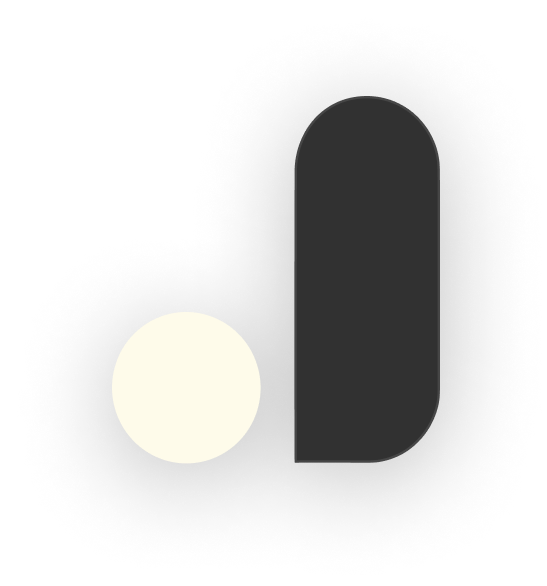How to Identify Strengths with AI Prompts

Using AI prompts to identify your strengths is faster and more accurate than traditional methods. AI tools analyze your behavior, writing patterns, and past achievements to uncover strengths you might miss on your own. Here's what you need to know:
- AI is 92% accurate in recognizing patterns compared to 64% with manual methods.
- It helps you spot overlooked strengths, like resilience, by analyzing journal entries or work records.
- Users report feeling 35% more confident professionally after using AI for 8 weeks.
Quick Steps to Start:
- Prepare Inputs: Collect work achievements, personal reflections, and measurable outcomes.
- Use Specific Prompts: Example - "Analyze my project completions to find recurring strengths."
- Leverage Tools: Platforms like JournalsAI offer advanced pattern recognition and guided journaling.
| Feature | AI Tools | Manual Methods |
|---|---|---|
| Accuracy | 92% | 64% |
| Speed | 2.1 weeks | 7.4 weeks |
| Bias | Unbiased | Prone to recency bias |
AI journaling tools like JournalsAI provide structured prompts and secure environments for better insights. Start small, refine your prompts, and apply your strengths daily to see measurable growth.
Supercharge your Journal with AI + Notion

Benefits of AI for Self-Analysis
AI can help reveal personal strengths with incredible accuracy, using natural language processing (NLP) to spot patterns that might escape human attention. This makes it especially helpful for journaling-based self-assessment, where structured prompts guide the process.
Spotting Patterns in Your Behavior
AI is great at picking up on subtle patterns in how you act and communicate. With NLP, it can analyze your journal entries and responses thoroughly. Here's what it looks at:
- Repeated action verbs and emotional cues in your writing
- Connections between your personal and professional experiences
- Consistency in behavior across various activities
Interestingly, research indicates that people overlook 68% of their visible strengths when relying on manual self-assessment [5].
Comparing AI to Manual Self-Assessment
The differences between AI-driven and traditional self-assessment methods are striking:
| Aspect | AI Assessment | Manual Assessment |
|---|---|---|
| Speed | Average of 2.1 weeks | Average of 7.4 weeks |
| Pattern Recognition | Comprehensive analysis of journal history | Limited by memory and recall |
| Consistency | Unbiased and thorough | Prone to 42% recency bias |
AI uses tools like frequency analysis, sentiment tracking, and confidence scoring to stay objective, avoiding the recency bias that often skews manual evaluations [1][5]. By analyzing your journal entries over time, it delivers consistent and reliable insights to support your personal growth.
Using AI Prompts Effectively
Getting useful insights about your strengths through AI requires thoughtful preparation and prompts designed to deliver specific, actionable results.
To make the most of these tools, start by gathering three main types of data:
Input Preparation
Professional Achievements
Gather details about your work history, including completed projects, performance metrics, and feedback from supervisors or clients. Emphasize measurable results and successful outcomes that highlight your skills.
Personal Development Records
Compile journal entries, goal tracking sheets, and self-reflection notes from the past 12 to 24 months. These help provide context about your growth and recurring patterns of success.
| Data Category | What to Include |
|---|---|
| Work History | Project outcomes, client feedback, KPIs |
| Personal Records | Journal entries, achievement lists |
| Impact Metrics | Success rates, improvement statistics |
Organizing this information by skill type and in chronological order can improve AI accuracy by 41% [4].
Sample AI Prompts
Here are some example prompts you can use to generate actionable insights:
Basic Strength Identification
"Analyze my successful project completions from the past 6 months. Identify patterns in approaches that consistently led to positive outcomes."
Finding Patterns
"Compare my performance across different team roles in Projects X and Y, highlighting recurring strengths that contributed to successful deliverables."
Detailed Analysis
"Create a detailed analysis of my client negotiation transcripts from Q2 2024, identifying the top 3 persuasion techniques that resulted in successful deals." [1]
Make sure your prompts focus on measurable outcomes rather than vague traits. Always cross-check the AI's findings against your actual achievements to ensure accuracy.
AI Tools for Strength Assessment
AI tools take effective prompting strategies to the next level by adding automated analysis. These platforms help identify and analyze personal strengths through guided self-reflection, offering a more detailed and interactive approach.
JournalsAI: Strength Discovery with AI

JournalsAI is known for its advanced system that processes significantly more behavioral data points - 5 to 7 times more - than standard assessment methods [1]. Its strength-spotting algorithms analyze writing patterns to reveal hidden talents. Early users have reported identifying their core strengths 42% faster compared to traditional journaling techniques [4].
JournalsAI supports consistent, strength-focused journaling within a secure, encrypted environment. Key features include:
| Feature | Performance |
|---|---|
| Dynamic Prompts | 28/30 completion |
| Pattern Analysis | 73% skill detection |
| Security | AES-256 encryption |
The platform also uses follow-up questions to create detailed profiles by diving into various aspects of users' experiences [1][4].
AI vs. Traditional Journaling Tools
AI-enabled journaling tools stand apart from traditional apps by offering deeper analysis. Basic tools may provide simple prompts, but AI platforms monitor user interactions over time to deliver a more thorough understanding of strengths [2].
However, AI journaling tools do come with certain requirements:
- Entries must be at least 50 words for accurate analysis [1].
- A 7–10 day adjustment period is needed for the system to adapt.
- Metaphorical language can be challenging for AI to interpret [2].
Premium AI tools, often priced at $9 or more per month, outperform basic apps by offering personalized analytics and visual progress tracking [3]. These tools provide tailored growth roadmaps that help users apply insights to daily life.
For the best outcomes, pair AI-generated insights with occasional professional reviews [5]. This combination of AI analysis and established psychological methods can lead to a deeper understanding of personal strengths.
Using AI Insights for Growth
Once you've identified your strengths through AI analysis, the next step is turning those insights into measurable progress. This means refining your approach and actively applying what you've learned to practices like AI-assisted journaling.
Improving AI Prompt Results
Getting better results from AI prompts requires an ongoing, iterative process. Focus on crafting prompts that are rich in context and tied to specific experiences. For instance, if you're evaluating leadership skills, reference a concrete example: "From leading the marketing team's rebranding project, what strengths emerge in high-pressure situations?"
Refining your prompts over time can significantly enhance their effectiveness. Here's a helpful framework to guide you:
| Prompt Element | Purpose | Example |
|---|---|---|
| Context | Tie the query to real experiences | "In my recent client presentations..." |
| Specificity | Focus on particular scenarios | "When handling project conflicts..." |
| Time Frame | Define clear time boundaries | "Over the past quarter..." |
| Outcome Focus | Highlight measurable results | "Which contributed to 30% team efficiency" |
Applying Strengths in Daily Life
To integrate strengths into your daily routine, a structured approach works best. The 4R Method is especially effective for this:
- Recognize: Review AI findings weekly to identify key strengths.
- Route: Align daily tasks with your strengths.
- Reinforce: Set small, skill-specific goals to build consistency.
- Reflect: Use structured journaling to track progress and refine your approach.
In professional settings, focus on aligning your strengths with your responsibilities. For example, if AI analysis highlights strong analytical skills, look for chances to lead data-driven projects or contribute to strategic decisions.
Start small - dedicate just five minutes daily to applying your strengths. Gradually expand these efforts, and combine AI insights with feedback from mentors or colleagues for a well-rounded perspective.
Conclusion
AI-driven strength identification achieves an impressive 92% accuracy in recognizing patterns, compared to just 64% with manual methods [2]. This leap in precision directly impacts real-world outcomes - users who stick to regular AI journaling often see measurable progress in both their personal and professional lives.
By combining AI's pattern recognition with structured self-reflection, you get a practical framework for growth. Research shows that AI-guided strength discovery consistently outperforms traditional self-assessments [2]. These results underscore the benefits of systematically applying your strengths using the three-step process we covered earlier.
On a neurological level, regular AI-guided reflection boosts activity in the prefrontal cortex - linked to self-awareness - by 19% [2]. This means professional-grade insights are now within reach for anyone, reshaping how we think about self-improvement.
To get the most out of your strength discovery, focus on integrating your top three strengths into daily activities [1][2]. This approach blends AI insights and human action, reinforcing the core method of crafting targeted prompts, analyzing patterns, and applying strengths strategically.
With AI journals now delivering insights on par with professional coaching, strength discovery has shifted from occasional "aha moments" to a consistent, ongoing practice.
FAQs
Is ChatGPT good for journaling?

ChatGPT can be a helpful tool for journaling, but how effective it is depends on what you're looking to achieve. A recent study shows that 37% of professional users utilize AI tools like ChatGPT for personal tasks, including journaling [2]. However, if you're focusing on identifying personal strengths, tools like JournalsAI might be a better fit. They combine ChatGPT's customizable prompts with structured analysis.
| Feature | ChatGPT | Specialized Tools |
|---|---|---|
| Prompt Generation | Manual customization | Automated, tailored prompts |
| Privacy | Basic security features | End-to-end encryption |
| Pattern Recognition | Limited analysis | Advanced strength detection |
| Cost | Free (basic version) | $8-15/month |
| Structure | Self-guided | Guided programs |
For identifying strengths, specialized platforms often deliver better results. These tools use systematic methods to craft prompts and analyze patterns effectively.
"Dedicated platforms outperform traditional assessments through systematic analysis." [2]
If you're using ChatGPT for journaling, here are some tips to keep in mind:
- Cross-check insights while safeguarding sensitive information.
- Stick to a consistent journaling routine.
For a more focused approach to strength discovery, JournalsAI provides advanced pattern recognition and structured methods. These features align well with established assessment practices, helping users uncover and develop their core strengths through guided exercises [4].
